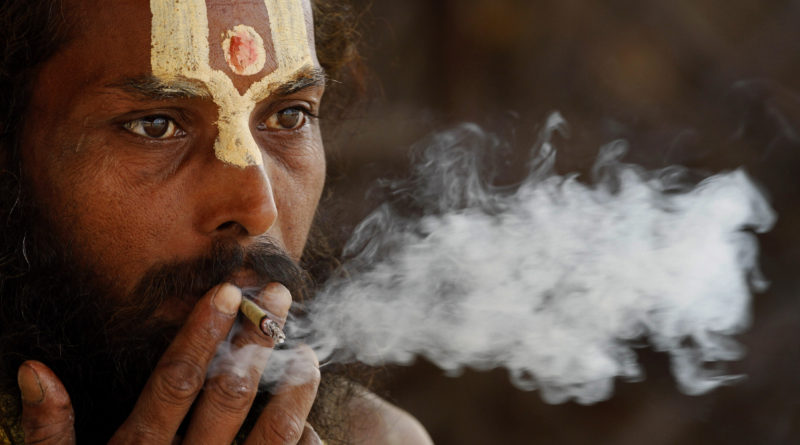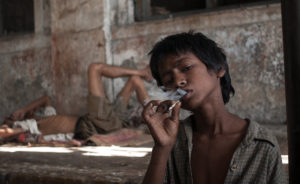Ta-ta Tobacco
Collective efforts are needed on the part of people and governments to discourage the consumption of tobacco
By Abhigyan
“It killed our ancestors; it’s killing us and will kill our generations.”
Tobacco, the most commonly sold drug, comes cheap but costs heavily on life. In India, approximately 10 lakh people die each year due to the consumption of tobacco.
Anti-Tobacco Day is celebrated to spread awareness about the harmful effects of tobacco consumptions in any form. Campaigns, health camps, public awareness sessions, rallies are organized by governmental and non-governmental organizations to provide information on adverse effects of on smoking tobacco of any kind on men and women (to avoid premature deaths). This day influences people to approach life with positivity, to imbibe good habits and quit smoking.
Says Dr Chandan Kedawat, Sr Consultant in Internal Medicine at Pushapawati Singhania Research Institute (PSRI), “The growing inclinations in youth for smoking tobacco have put the future of country in peril; a large number of people suffering from lung and mouth cancer falls under the range of 25 to 45 years of age. The trendy looking forms of tobacco are bidis – flavoured and non-flavoured, cigarettes, cigars, electronic cigarettes, hookah, kreteks (clove cigarettes) and even dissolvable tobaccos.”
Cigars, symbol of expensive lifestyle can be even more dangerous. Cigar smoking is linked to cancers of the mouth, lips, tongue, throat, larynx, lung, pancreas and bladder cancer.
In recent study, a new fashionable trend of smoking hookah has been seen. Smoking hookah exposes the user to 100 to 200 times the volume of smoke inhaled from a single cigarette. Moreover due to sharing of mouthpiece, many infections also get transmitted amongst users. Smokeless tobacco is also not safer. It consists of 28 cancer-causing agents (carcinogens). It increases the risk of oral cavity cancer, which associates with leukoplakia and recession of the gums.
Tobacco is a very addicting product, close to heroine addiction but it is never impossible to quit smoking. Quitting tobacco completely can save a person from cancers of the bladder, oral cavity, pharynx, larynx (voice box), esophagus, cervix, kidney, lung, pancreas, and stomach, and acute myeloid leukemia. Also, it can reduce the chances of heart disease and stroke.
It can be very difficult to quit smoking or chewing of tobacco but by implementing some simple changes in your daily routine, you can reduce its craving.
Water – Water can help your body to detoxify the nicotine present in blood due to prolonged regular consumption of nicotine.
Ginger – The common side effect of quitting tobacco is feeling of nausea. Ginger helps to combat that nausea and can be consumed in form of ginger tablets, capsules or in tea.
Vitamins – Multivitamins especially containing Vitamin A, C and E are proven to be excellent for repairing body by adding essential nutrients to expel the toxins. This will also give relief from withdrawal symptoms by providing extra energy, strength to body.
Ginseng – Add spoonful of Ginseng powder in your juices, cereal, oatmeal or soup to avoid the craving.
Grape Juice – Daily Grape juice helps you to fight toxins as it has natural detoxifiers and rejuvenates your system and keeps your energy levels high.
Build a quit plan by throwing ashtrays and any smoking related items in house, office and car. Adopt stress management plan, nicotine replacement therapy, behavioural therapy and medicines and if needed combo treatment. Please do not hesitate in taking advice from a psychologist or a doctor, if necessary.
As per the Global Adult Tobacco Survey (GATS) Factsheet, it is seen that tobacco consumption will be killing over 1.5 million people every year by 2020 including male, female and premature deaths, if not taken seriously.
According to report by International Tobacco Control Project (ITCP) India with the population of 1.2 billion has currently reported 275 million tobacco users. ITCP has also conducted survey face to face by interviewing 8,000 tobacco users and 2400 non-users across 4 Indian states – Bihar, Maharashtra, Madhya Pradesh and West Bengal. As per GATS, 26 percent of adults in India consume smokeless tobacco – 33 percent of men and 18.4 percent of women.
It is possible to secure the future and make the country tobacco free, if each one of us makes efforts to this effect.


